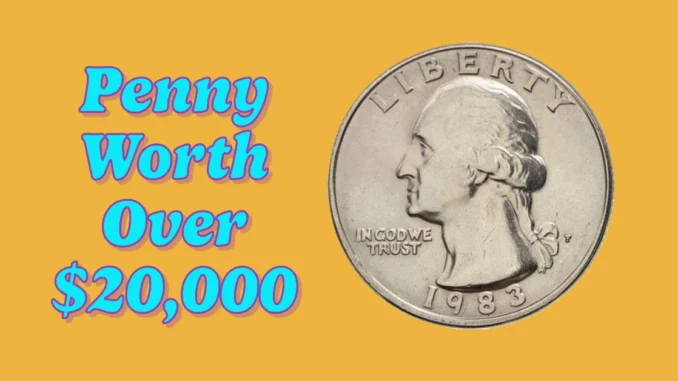
For most people, pennies are often overlooked, but some rare coins are worth a small fortune. According to numismatic experts, a specific 1983 penny with a manufacturing error could fetch up to $20,000 at auction. If you’ve got some loose change lying around, now is the time to take a closer look—your penny could be hiding a valuable secret.
Table of Contents
Why Some 1983 Pennies Are So Valuable
The value of these pennies stems from a manufacturing error during the U.S. Mint’s 1980s transition to zinc-based pennies. Starting in 1983, pennies were primarily made of a zinc core coated in copper, replacing the costlier copper-cored pennies. However, a few all-copper pennies were mistakenly produced, and their rarity has made them highly coveted by collectors.
The distinguishing feature of these rare pennies is their weight.
- Regular 1983 pennies: Typically weigh 2.5 to 2.7 grams.
- Error copper pennies: Weigh more than 3 grams.
A rare 1983 penny recently sold for over $20,000 at auction, and another fetched $1,140 in 2023.
The Design and Minting of Bicentennial Coins
Bicentennial Quarter Errors: A Collector’s Dream
Top 5 Rare Bicentennial Quarters to Add to Your Collection
Bicentennial Budgeting: How Americans Managed Finances in 1976
How to Identify a Valuable 1983 Penny
The key to identifying these rare pennies lies in their weight. Experts recommend the following steps:
- Use a Precision Scale:
- Make sure your scale can measure in grams and ounces for accuracy.
- Avoid scales that round numbers, as they may produce inaccurate readings.
- Weigh Your Coins:
- Place the penny on the scale. If it weighs more than 3 grams, you may have struck gold—figuratively speaking.
- Verify Authenticity:
- If you find a potential copper penny, consider professional authentication services, such as the Professional Coin Grading Service (PCGS), to confirm its value.
Rare Kennedy 1964 Half Dollars Worth Thousands of Dollars: Hidden Treasure
A Brief History of the US Penny
The U.S. penny has a rich history dating back to the establishment of the U.S. Mint in 1792. Its design and composition have evolved over the centuries:
- The penny’s origins trace back to the Roman denarius, which dates to 211 BC and was equivalent to a day’s wage.
- The penny’s size was reduced in 1857, and the unpopular half-cent coin was discontinued due to rising copper costs.
- Today, the penny is the only coin consistently minted and circulated since the Mint’s inception.
Modern Penny Circulation in the U.S.
Despite its declining purchasing power, the penny remains a staple in American currency:
- In 2023, the U.S. Mint shipped 4.1 billion pennies, significantly outnumbering nickels, dimes, and quarters.
- Legislative attempts to discontinue the penny have repeatedly failed, as removing it would require an act of Congress and presidential approval.
The Debate: Should the Penny Be Retired?
The future of the penny has been a topic of debate:
Arguments for Keeping the Penny:
- Protects low-income consumers by maintaining small denominations.
- Supports charities through fundraising efforts.
- Costs less to produce compared to higher denominations.
Arguments Against the Penny:
- Low value makes it inefficient for transactions.
- Environmental and financial costs of production are significant.
- Eliminating the penny could streamline transactions without harming consumers or businesses.
Don’t Overlook Your Change
Whether you’re a collector or just curious, take a moment to check your spare change. A simple 1983 penny could be worth thousands of dollars thanks to a manufacturing anomaly. With the right tools and a bit of luck, you might just uncover a rare piece of history that turns into a financial windfall.
Leave a Reply